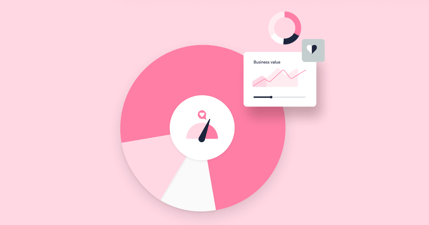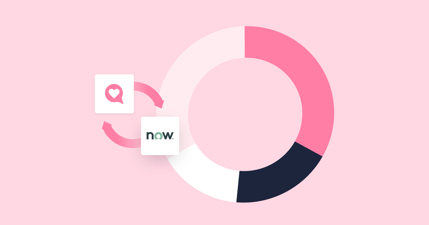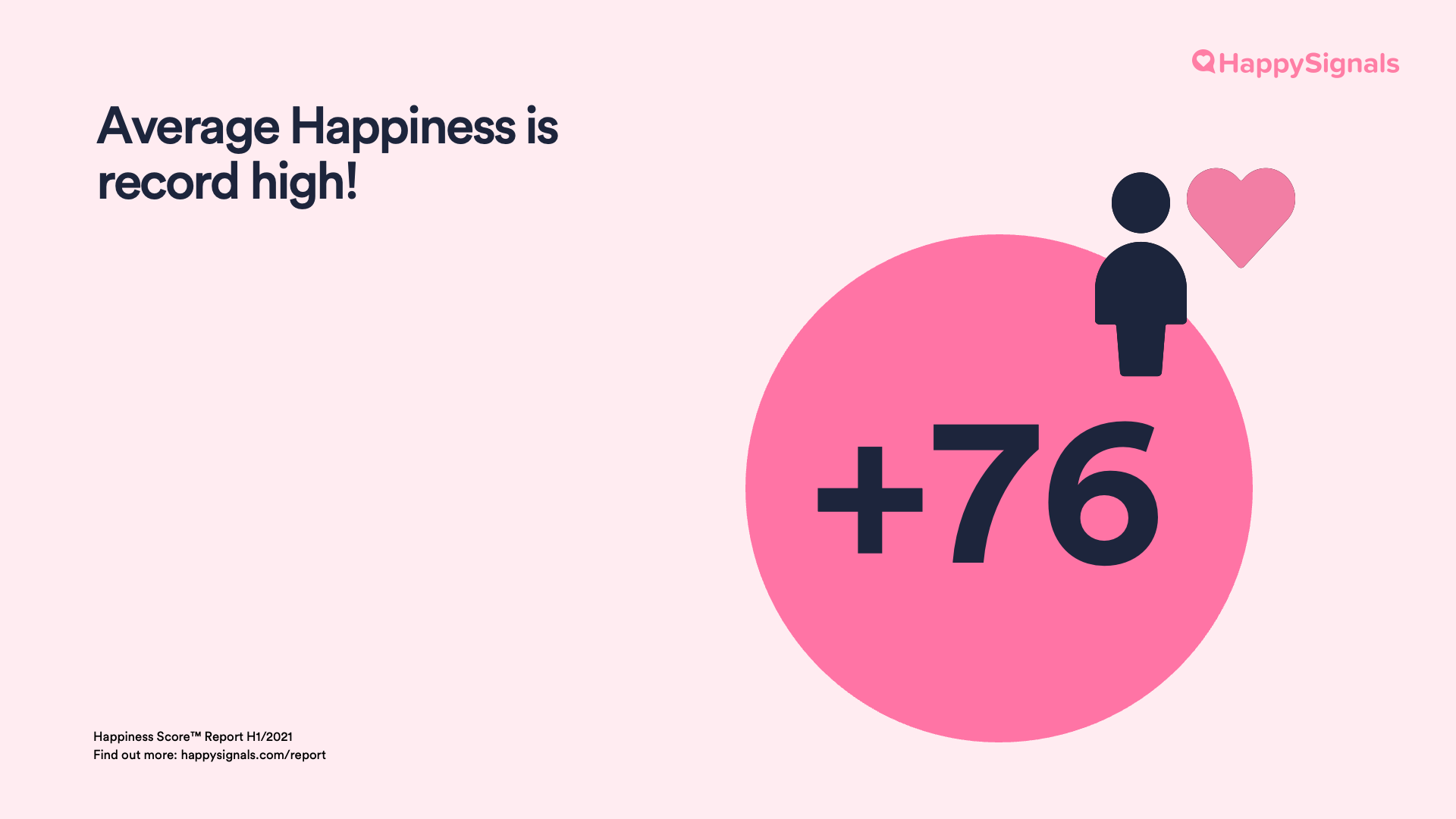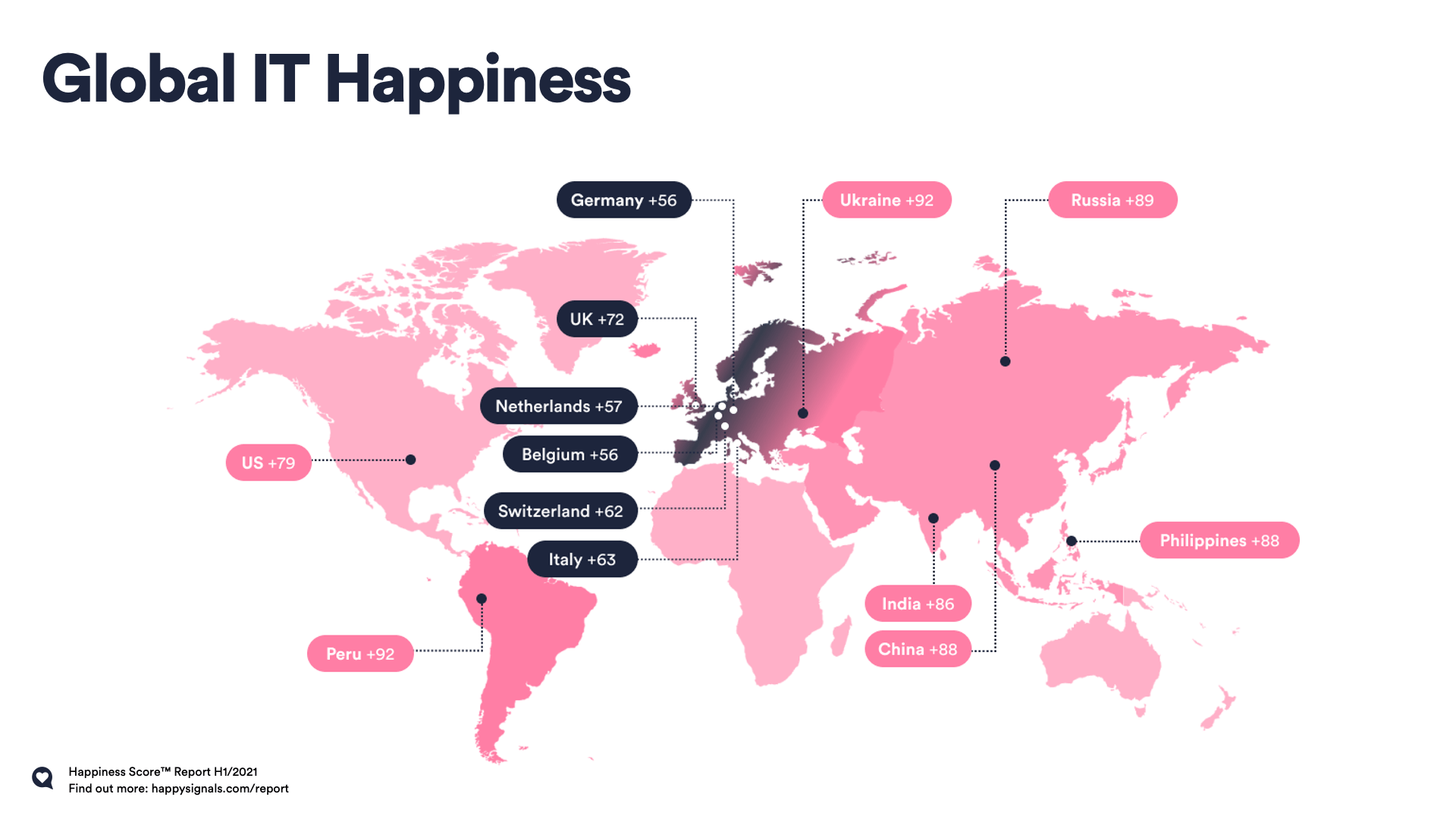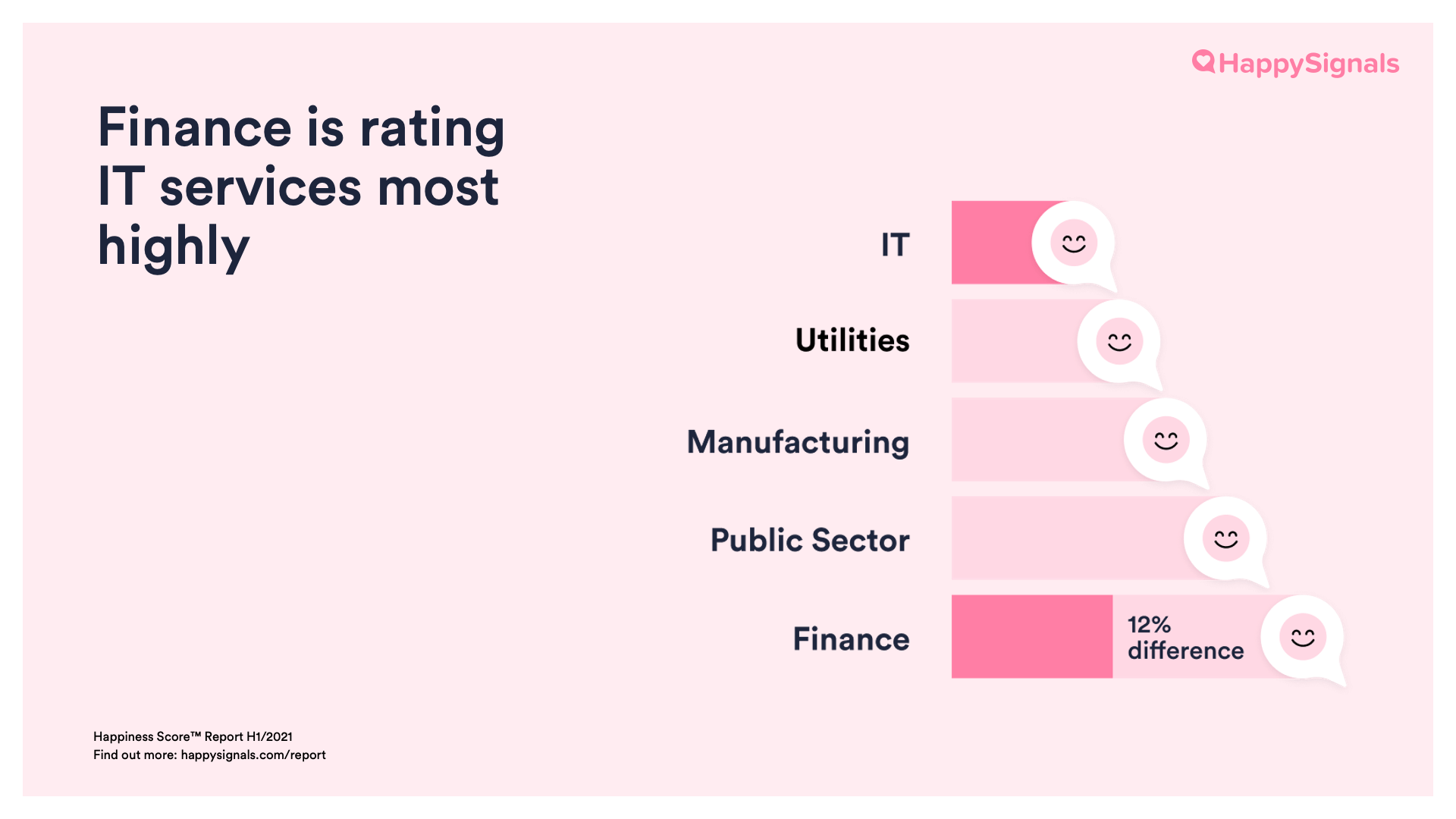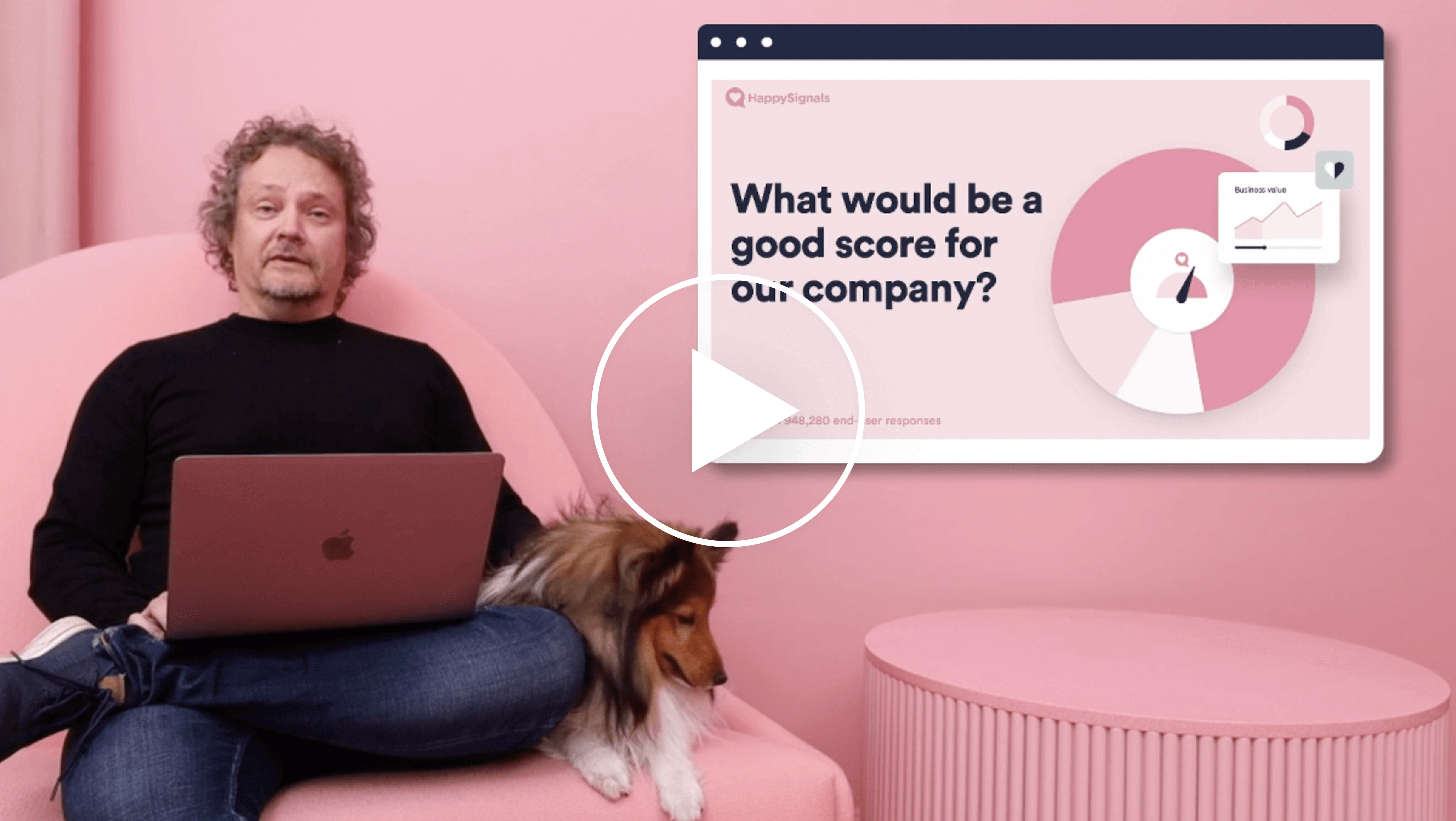Internal or Outsourced Service Desk?
�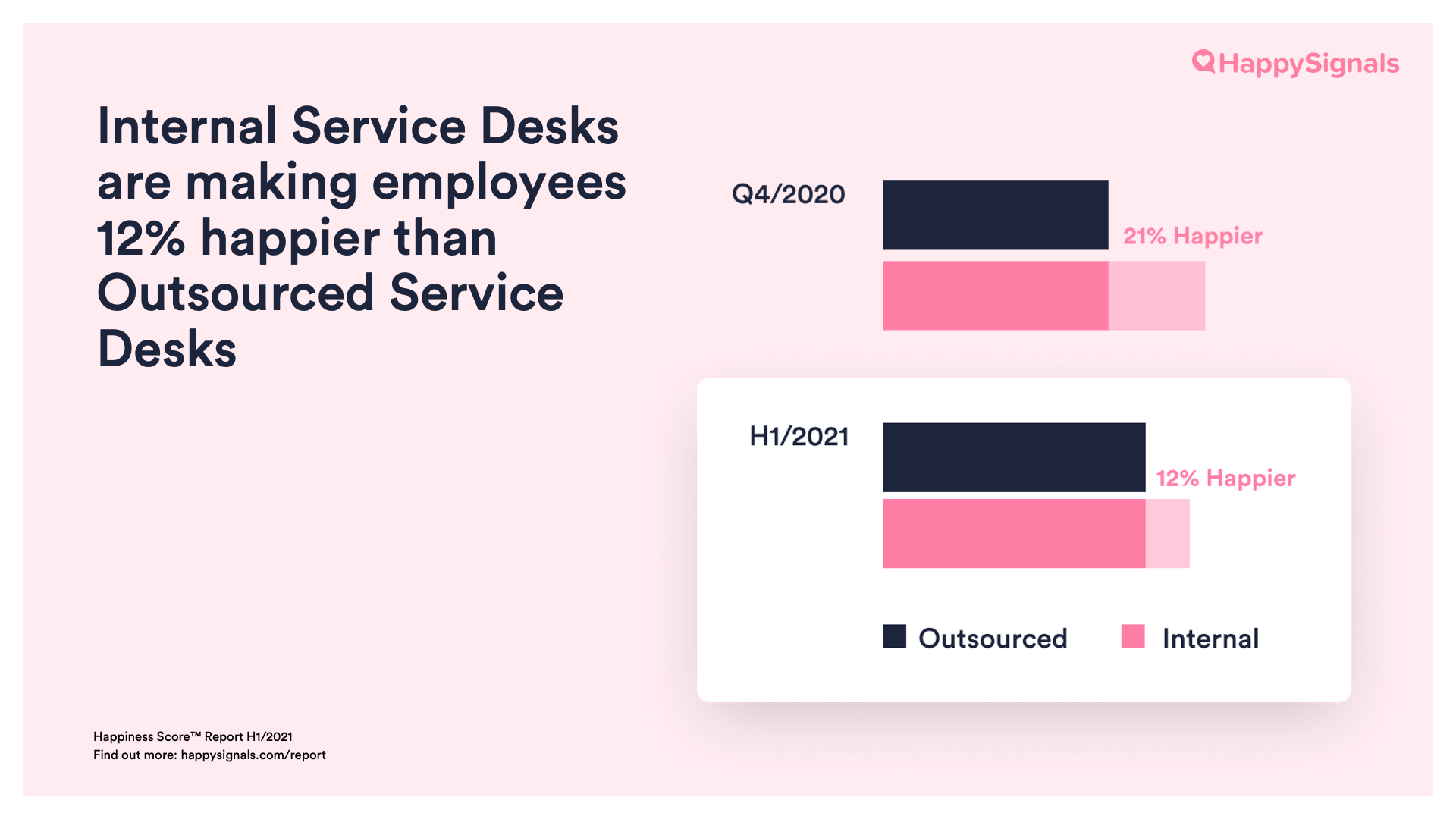
Does your company have an internal service desk for IT, or an outsourced one? That might influence your end-user happiness too.
As of H1/2021, employees in companies with internal service desks are 12% happier than those in companies with outsourced service desks. However, the gap has reduced significantly since Q4/2020, when it was 21%.
Outsourced service desks are potentially working harder on using experience data to improve their services, and are hence catching up with internal service desks.
So even if you have an internal service desk and your scores look alright, it isn’t the time to be complacent. After all, the ultimate aim of collecting experience data is to continuously improve on the experiences you are delivering to your end-users.
Size matters.
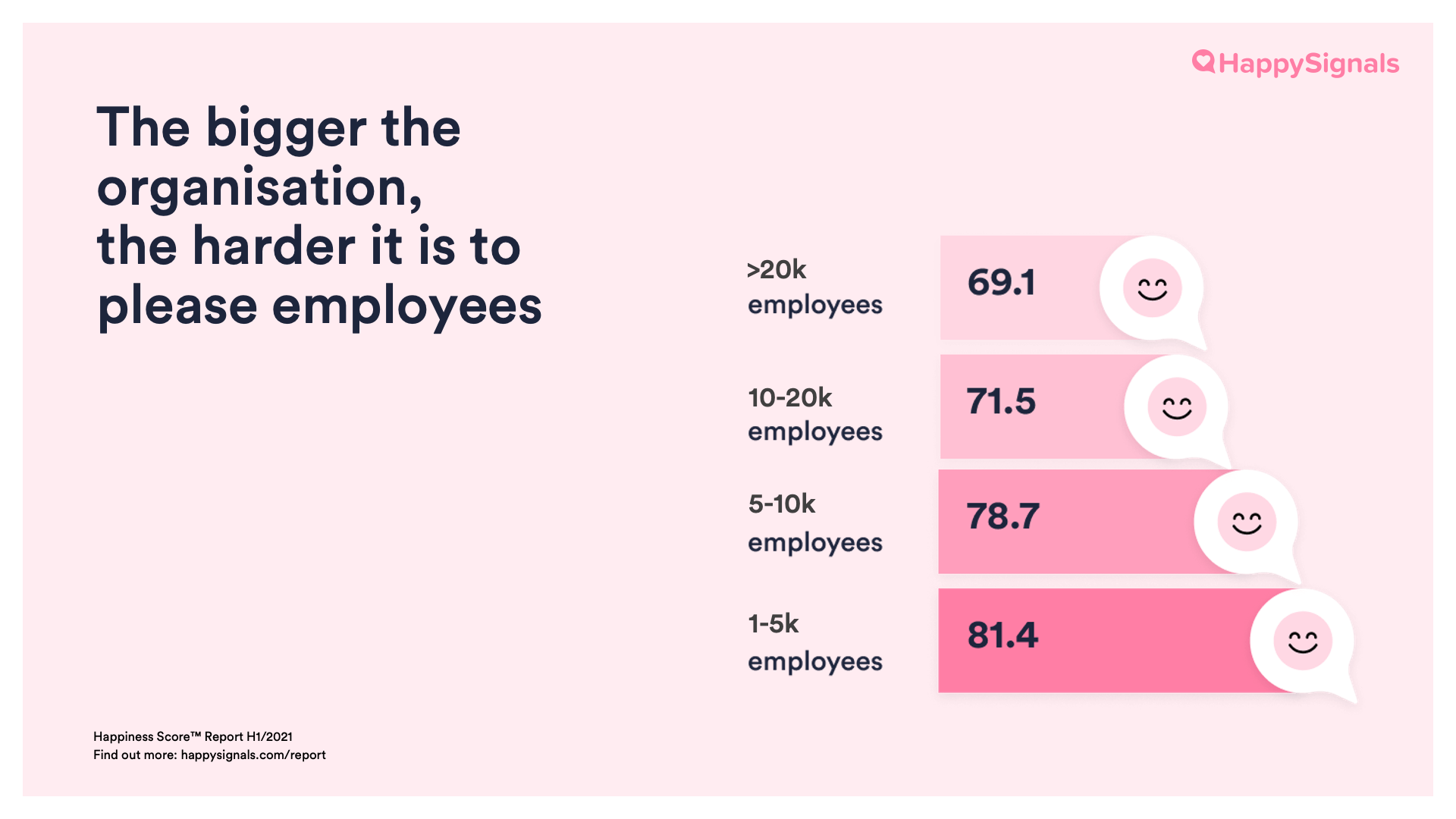
Bigger companies with more employees achieved lower end-user happiness with IT than smaller ones. It seems like in bigger companies, it is more difficult to make end-users happy. But there are several layers to this.
Amongst our customers, only 33% of smaller companies with less than 5000 employees have outsourced their service desk, but up to 73% of bigger companies with more than 5000 employees have outsourced their service desk to an external vendor or Managed Service Provider (MSP). Hence, the differences in happiness may also relate to the differences in happiness between internal or outsourced service desks, which I mentioned earlier.
Interestingly however, outsourced service desks are also performing better for the bigger companies. Hypothetically, this could be because MSPs may be better at providing services at the right time zone for employees of big international companies, or be more focused on serving you if you are a bigger company.
In short, the data as of H1/2021 shows that it makes sense for smaller companies with less than 5000 employees to stick with internal service desks, while outsourcing works better for bigger companies.
Some industries have more critical end-users?
Among our customers, average end-user happiness with IT seems to be lowest in the IT industry and highest in the Finance industry, though the difference is only 12%.
My hypothesis is that many end-users who work in IT tend to be of the support profile that we call “Doers” – technically capable and able to solve simpler IT issues on their own. Hence, such Doers only go to IT for support for more complicated problems, which are also harder for IT to resolve.
It is hard to say why end-users in Finance are happier with IT on average, and I would love to hear your opinions as well. One possible reason could be that the Finance industry is one of the more regulated ones here (alongside the Public Sector). It may be easier to establish and provide standardized services when technological changes occur less rapidly.
Experience Management is not about chasing a “good score”
I hope this blog has helped you to understand your scores in context with the differences in end-user happiness that we found across countries, companies, and industries.
But again, I want to emphasize that you should not treat this as a competition to get a better score than others, or it would be nothing more than a vanity metric. Rather, use experience data to understand changes in your workforce’s expectations and continuously improve on the IT services you provide to them.
If this short blog has been insightful to you, do check out The Global IT Experience Benchmark H1/2021 Report for our full analysis and to see more of the data for yourself. As always, I am happy to answer questions or have more discussions about any of our insights, so feel free to contact me via Email or Linkedin.

